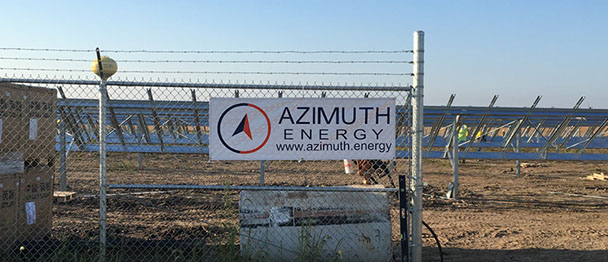
Fence grounding around a utility solar field is not clearly defined in any code or standard. Fence grounding around substations is very clear and necessary. But a solar field is not a utility substation, and the level of risk is much different.
The National Electrical Safety Code (NESC) Section 11, Rule 110(A) cites Section 9 for grounding requirements, and further states grounding shall be in accordance with “industry practices” (Rule 092(E)). Since we started working on utility-scale projects a few years ago, we have not found any “industry practice” or standard or best practice associated with it. So we did some research and are offering this information to the industry for use or comment.
Our survey of industry practices includes discussing with Bill Brooks, PE; Brooks Engineering (www.brooksolar.com), other industry experts, and multiple fence contractors that construct fencing for solar farms and utility substations. This guidance is predicated on the photovoltaic array being grounded in accordance with the National Electrical Code and that there are no other “special areas of concern” pursuant to IEEE Standard 80, Section 17 (such as operating shafts, rails, pipelines, or cable sheaths).
- Grounding of the perimeter fence should be done at least once, within 50’ of the point where the medium-voltage conductors or duct bank cross under or over the perimeter fence. The measures for this grounding described below are herein referred to as a fence grounding “Kit”.
- A driven rod located inside the fence line, at least 8’ in length. Copper-clad, stainless steel, or stainless-steel clad rods shall be at least 12” diameter. Other arrangements as outlined in the NESC (Rule 94(B)).
- Bonding the rod to a fence post using a conductor sized appropriately for the “design and operating conditions”, but not smaller than a #8 AWG copper conductor or aluminum of the same ampacity (Rule 93(C)(6)).
- The barbed wire and wire mesh shall also be bonded to the fence post at that location, using the same sized copper wire as above (Rule 92(E)).
- Grounding and bonding connections shall be clamped, split ring, mechanical, brazed, welded, or compression type (Rule 095(A)).
- The gates in the fence shall be bonded to the fence post using the same size conductor as above, and that fence post grounded with the Kit as described above. If that fence post is also within 50’ of the medium-voltage pathway, the post at the gate should be the post that is grounded for both purposes.
- For systems where overhead medium- or high-voltage transmission or distribution (T&D) lines cross directly above the perimeter fence, the same grounding Kit shall be installed once underneath the overhead lines.
- If a gate in the perimeter fence is positioned underneath the T&D lines, then fence posts on both sides of the gate shall have a grounding Kit, or else an underground jumper shall be installed, at least 12” below grade, effectively bonding the fence posts on both sides of the gate.
- An underground mesh grounding grid is not required (Rule 090).
